There is so much buzz and controversy around the topic of ‘cheating in art’ to the point no one knows a clear answer. Here is my answer to the question of ‘what is cheating in art’ considering both the ethical and legal implications of the matter.
There is no such thing as cheating in the art unless you are plagiarizing the work of another artist. Plagiarizing is a copyright infringement when done without the permission of the copyright owner. But the tools and techniques artists use to speed up the art-making process are not cheating.
There are many tools and techniques artists use to speed up their work like tracing, gridding, using projectors, rulers, etc. However, these tools and methods can sometimes hinder the quality of the final art piece, which should be your only worry as an artist.
The information provided on this site does not, and is not intended to, constitute legal advice; instead, all information, content, and materials available on this site are for general informational purposes only.
What is considered cheating in art?
The only form of cheating in art is copying or plagiarizing the work of another artist without their permission. This is a copyright infringement and extremely unethical. Other than that you can use the methods like tracing, using a projector, or shaper tools to help speed up the artwork.
In the art world, many artists debate about whether tracing, using reference photos, gridding, photo bashing, using shaper tools, or picking colors from digital art is cheating. Some of these methods like using reference photos are extremely helpful to artists. There are some methods like tracing that is not cheating but make your art look flat and reduce the quality of the final artwork.
Visual plagiarism is the only form of cheating in art
Visual plagiarism is also known as art theft. Art theft is when one artist uses another artist’s artwork or a design as their own. Artwork that could be plagiarized includes paintings, drawings, sculptures, photography, brand names, logos, advertisements, and other visual images. (source)
Visual plagiarism or using another artist’s work as it is and without their permission is not cool in any case. This includes copying another artist’s work without their permission and posting them on social media. Copying is okay if you are doing it solely for learning purposes.
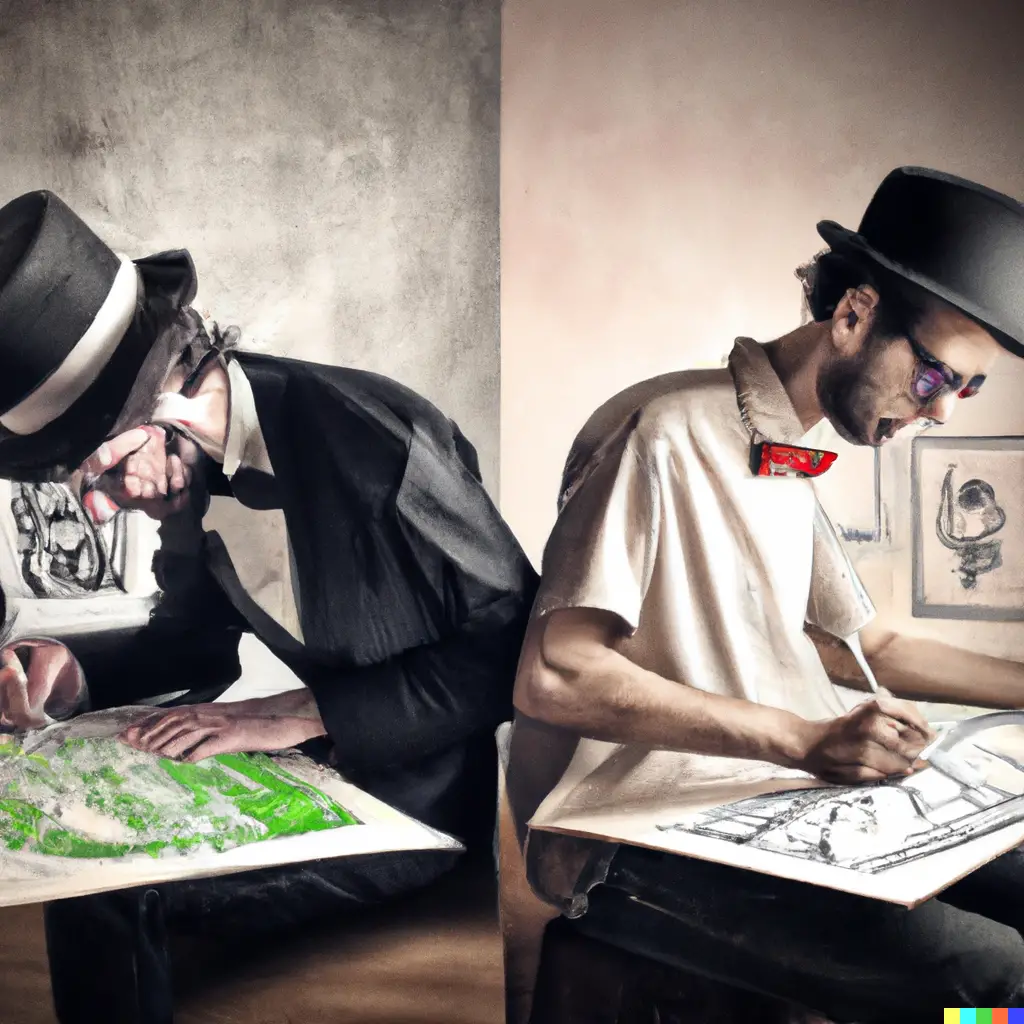
If you are copying another artist for learning purposes you can do the study and just forget about it without posting on social media platforms or going public about it. Because most artists won’t like that. Most importantly it could be a copyright infringement if you post your copy of another artist’s artwork without their permission.
Famous artists who have cheated in art
There are many cases where famous artists have cheated and used the original work of other artists, without their permission. Below I will explain to you a few of these cases.
Jeff Koons is an American sculptor, painter, and illustrator. He was inspired by porcelain figurines, party decorations, cartoon characters, and kids’ toys. He did a sculpture series called as Banality series based on the original work of other artists where he was sued for infringement of copyrights many times.
One example is jeff Koons’s sculpture String of Puppies (1988) from the Banality series which was a copy of the photograph Puppies (1985) by the professional photographer Art Rogers.
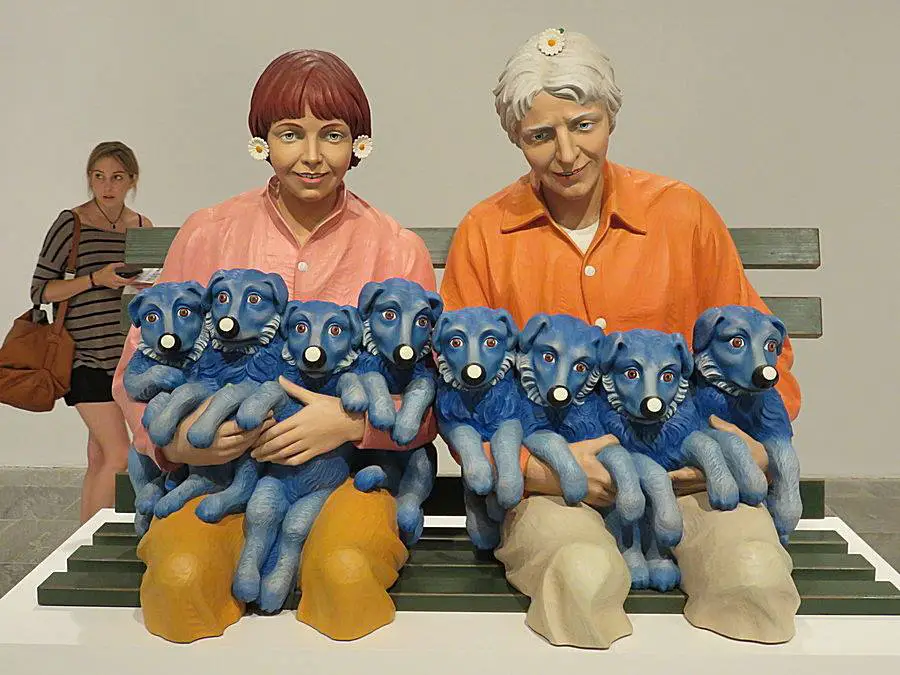
There are many other cases where famous artists have visibly cheated in their art. One other example is former president Obama’s poster of Shephard Fairey based on a photograph captured by Associated Press freelancer Mannie Garcia.
If you want to learn more about the great work of artists done in the medium of acrylic paint, you can read my article Do professional artists use acrylic paint? (with examples).
Copyright infringement; illegal use of the artwork
Copyright infringement of artwork or any other original creative work is way beyond cheating but a way of breaking the country’s law. If this happens you may be liable for the loss caused for the copyright owner and more. It is easy to be in copyright infringement even without knowing. Therefore knowledge of copyright law related to artwork is needed to grow as a better artist.
What is copyright?
Copyright is a type of intellectual property that protects original works of authorship as soon as an author fixes the work in a tangible form of expression.
U.S. Copyright Office
The original work created independently by a human author with minimal creativity can be copyright protected. So the artwork or any other original work needs to be created by yourself without copying or plagiarizing. Also, copyright protection is for the expression but not for any art styles, ideas, systems, methods, principles, discoveries, procedures, processes, and concepts.
You are the copyright owner of a work the moment you have written it down, captured, or recorded your original work either by you or someone else under your authority. This can be a painting, illustrations, photographs, songs, books, poems, blogs, architectural works, and much more (source).
However, if you are working for a company, organization, or other people they can also be copyright owners of your original, creative work. So the work your make for the employer as you are working as an employee can be owned by the employer according to the copyright law.
Also, you can transfer copyright ownership in certain situations. Copyright ownership can also come from contract work.
Copyright infringement of original, creative work
According to the copyright law of the United States, anyone who violates any of the exclusive rights of the copyright owner mentioned in the copyright law is an infringer of the copyright or right of the author. (Copyright Law of the United States in Tıtle 17 of the United States Code (May 2021))
As a general matter, copyright infringement occurs when a copyrighted work is publicly displayed, made into a derivative work, reproduced, distributed, or performed without the permission of the copyright owner.
U.S. Copyright Office
According to the copyright law of the United States, in general, the infringer of copyrights is liable for the damages of the actual copyright owner and any profit made from the infringement. Or else the copyright owner can have an award of statutory damages for all infringements involved in the action, which is not less than $750 or more than $30,000.
If the copyright infringement happens willfully the award of statutory damages may increase up to $150,000. But if the copyright infringer had no idea that his or her action cause copyright infringement the award of statutory damages will be decreased to a sum of not less than 200$. (source)
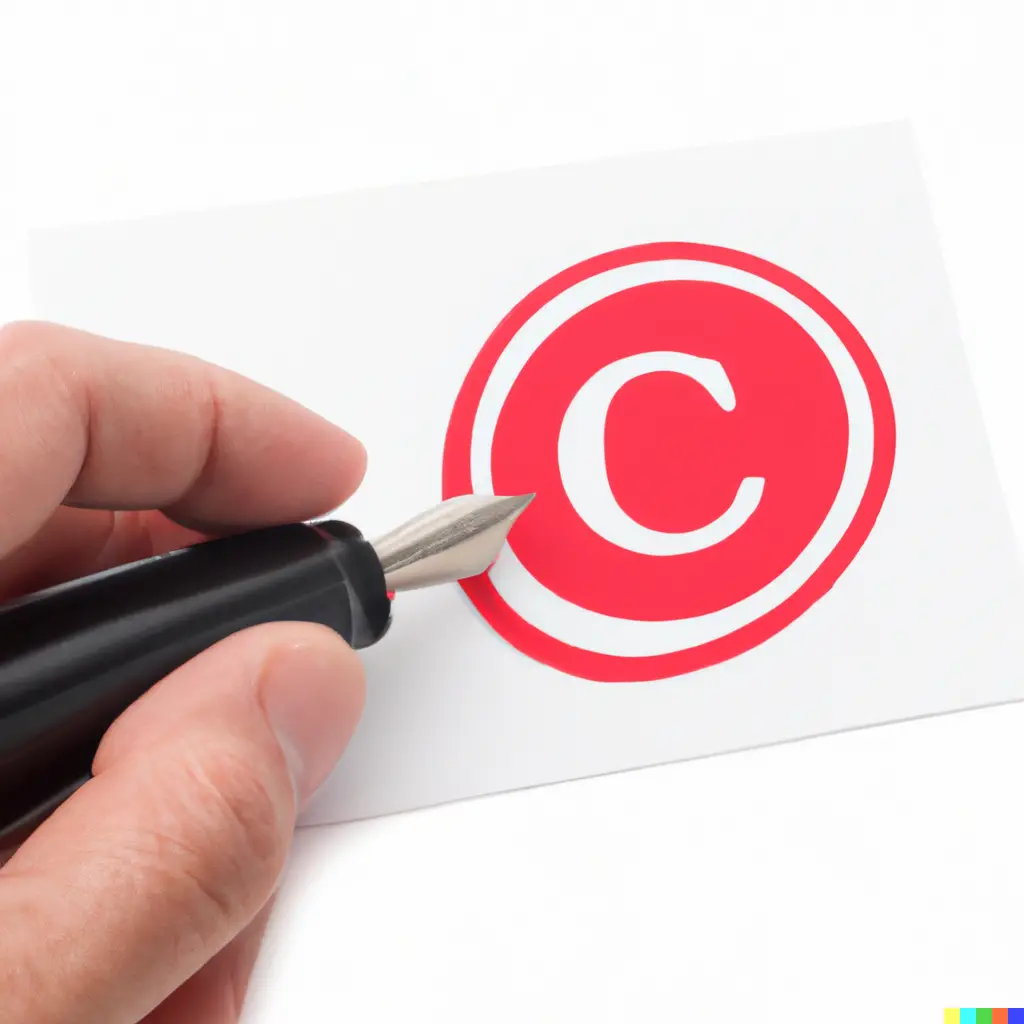
There is so much you need to know about copyright law. You can read more about this matter in Copyright Law of the United States in Tıtle 17 of the United States Code (May 2021). It is also advised to get help from an attorney regarding the legal matters of your artwork.
Avoiding copyright infringement of artwork or visuals
Copyright infringement can happen unwillingly even without you knowing. To avoid copyright infringement of visuals, use creative common artwork with proper author attribution, take permission from the creator, or use the artwork in the public domain.
You can also use free sources of visuals after referring to their licenses or use visuals from a stock photo company after purchasing a relevant license from them. However, you need to be very thorough with the license when using free stock images or royalty-free stock images.
Because you can still get copyright infringement even though you use a free image for the artwork or paid for the license. However, some stock image companies will cover you for any loss due to copyright infringement if you use their images within the terms of their license agreement.
This means you will not be in copyright infringement if you purchase a stock image with the correct license. Always make sure to read the license information before you purchase an image. The same will apply to any visual media, like photos, vectors, videos, or illustrations.
By now you might have realized the best way to use visuals in the artwork is by creating your own where you are the copyright owner. Always capture your own images when possible. This will save more bucks for you to create the actual artwork rather than spending on licensing visuals, which may not provide any guarantee that you are not in infringement of copyrights.
Fair use in copyright law
According to the US copyright office, fair use permits the unlicensed use of copyright-protected work in some circumstances. If you use copyright-protected work for criticism, teaching, comment, news reporting, and research it is considered fair use.
To determine if it is a fair use of copyright-protected work, you need to consider four factors. The purpose and character of the use, the nature of the copyrighted work, and whether unlicensed use harms the existing or future market for the copyright owner’s original work.
Under the purpose and character of the use, it is considered if the work is used for nonprofit or noncommercial use. Also “transformative” work which has added something new, with a further purpose or different character without substituting for the original use of work is considered fair use.
Under the nature of the copyrighted work, it is less likely to consider the use of more creative work like a movie, novel, song, or unpublished work as fair use while factual work such as a technical article is considered more fair use.
In addition to the above four factors, the court may use other factors to determine if it is a fair use of the copyright-protected work. In the end, it is up to the court to decide whether it is fair use or not. No attorney can predict the court decision about fair use 100% beforehand.
Is tracing art cheating?
Tracing is not cheating as long as you are not tracing or copying another artist’s original artwork or a photograph without permission. Tracing can affect the quality of the final artwork and make the artwork look flat. Many artists would not enjoy the process of tracing as it is mechanical.
Tracing is the transferring of artwork from one surface onto another surface by drawing over the lines of the first artwork. It produces an exact drawing copy of the first artwork. Materials like tracing paper, carbon paper, projectors, windows, and lightboxes are used for tracing and transferring visuals.
Why do artists trace?
In general, artists trace when they want to transfer the artwork onto another surface fast because drawing can take a long time. If there is a fast way to get there without compromising the quality of the final artwork, it is best to follow it. However, you should not copy the artwork of another artist without their permission.
Also, there are many beginner art tutorials on the internet or on Youtube that provide you with traceability to practice with. In this case, tracing can be very useful. Because most beginners in art especially in painting may not be best at drawing. So traceable help them with the painting despite their lack of drawing skills.
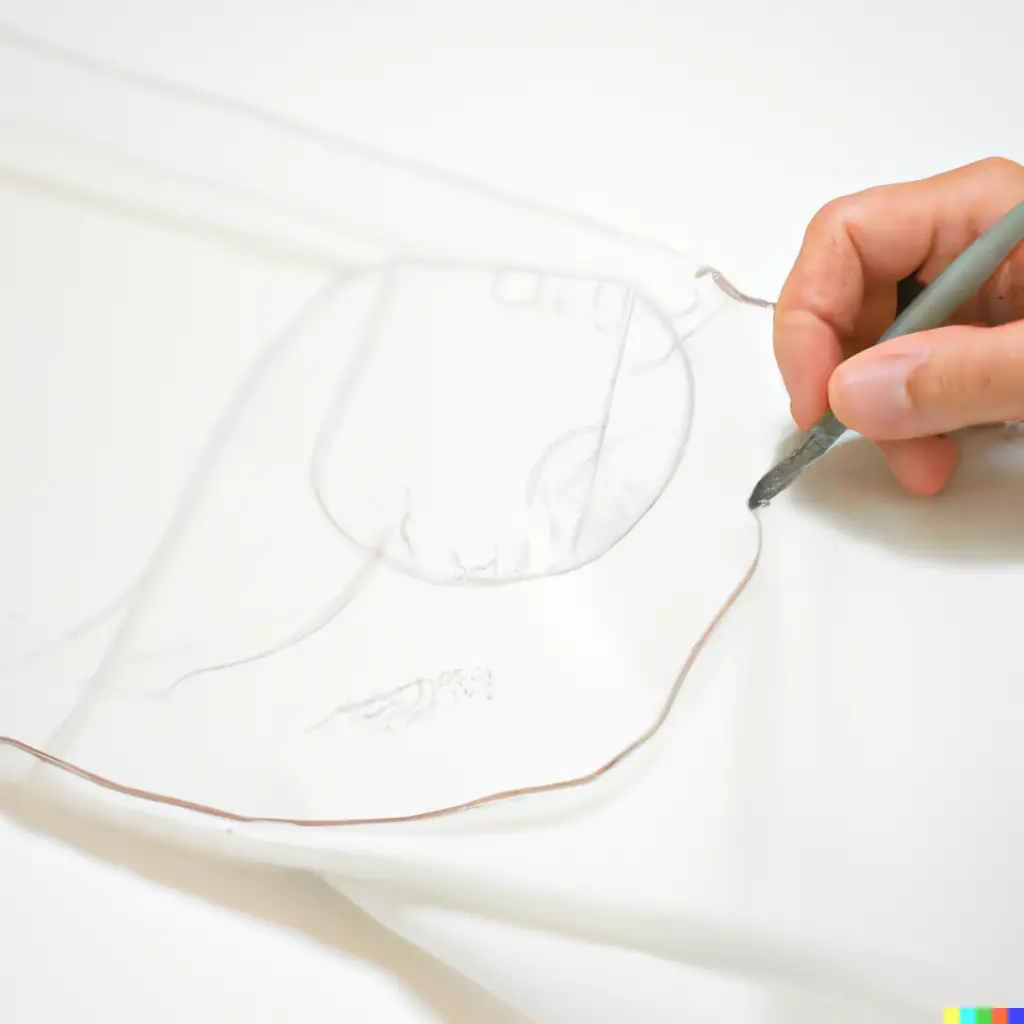
Mural artists also use projectors to project the artwork they want to do as a mural onto a surface like a wall. This is usually a large-size image. So you do not want to free-hand a large mural considering proportions, perspective, etc, taking a long time.
However, if you are planning to become an artist in the long run the best option would be to learn how to draw. The more you draw the better your drawing skills would be. At one point you will realize that you can draw from a reference photo faster than tracing the reference.
Other than the speed, when you draw the image it would be more lively and fun to draw. You will find many surprises and it is not always clear-cut lines like when you trace. Also, you’ll develop observational drawing skills where you’ll learn about composition and perspective.
But if you don’t like to draw and tracing works just fine for you, there is nothing wrong with walking that route.
Is using a grid to draw cheating?
Drawing using a grid for artwork is not cheating but rather it is a more exhausting process. It takes away the enjoyment of actual drawing while being very time-consuming. However, gridding help to draw according to the actual proportions so the image can be transferred onto a surface more accurately.
I have also tried gridding in some of my artwork but it took me forever to draw. But the drawing was more accurate and you can scale the grid up to any size you like. However, gridding is a more exhausting process than tracing.
I actually prefer tracing over gridding because tracing is faster. But it is up to you to decide what you want. If you can achieve the final result you want by either of these methods, you are free to use them. They are in no way cheating unless you are plagiarizing or infringing the copyrights of the original author.
Other common cheating beliefs in art
There are some other ways of cheating that people believe in art but are not actually considered cheating. Let’s look at some of them in detail below.
Is using a reference photo cheating?
Using a reference photo is never cheating rather it helps the artist a lot. Artists can observe the small details, shapes, composition, and perspective from a reference photo. Most professional artists use reference photos when creating artwork. The only thing you need to worry about is the copyrights of the reference photo used.
Many artists cannot draw from their memory and it is not required to draw from the memory. The thing is creating your own rendition of artwork using a reference photo. To avoid copyright issues it is always best to take your own photos.
When taking your own photos take a large photo capturing the larger composition and closeups of different elements in the composition. This way it will be easier for you to plan the overall composition of the artwork and add details more precisely by referring to the closeup photos.
Is painting over an image cheating?
Painting over an image is not cheating, as long as you comply with the copyrights of the image you are using or using the photos you have taken. However, painting over images physically can be very time-consuming as you are blocking out the image with opaque layers of paint.
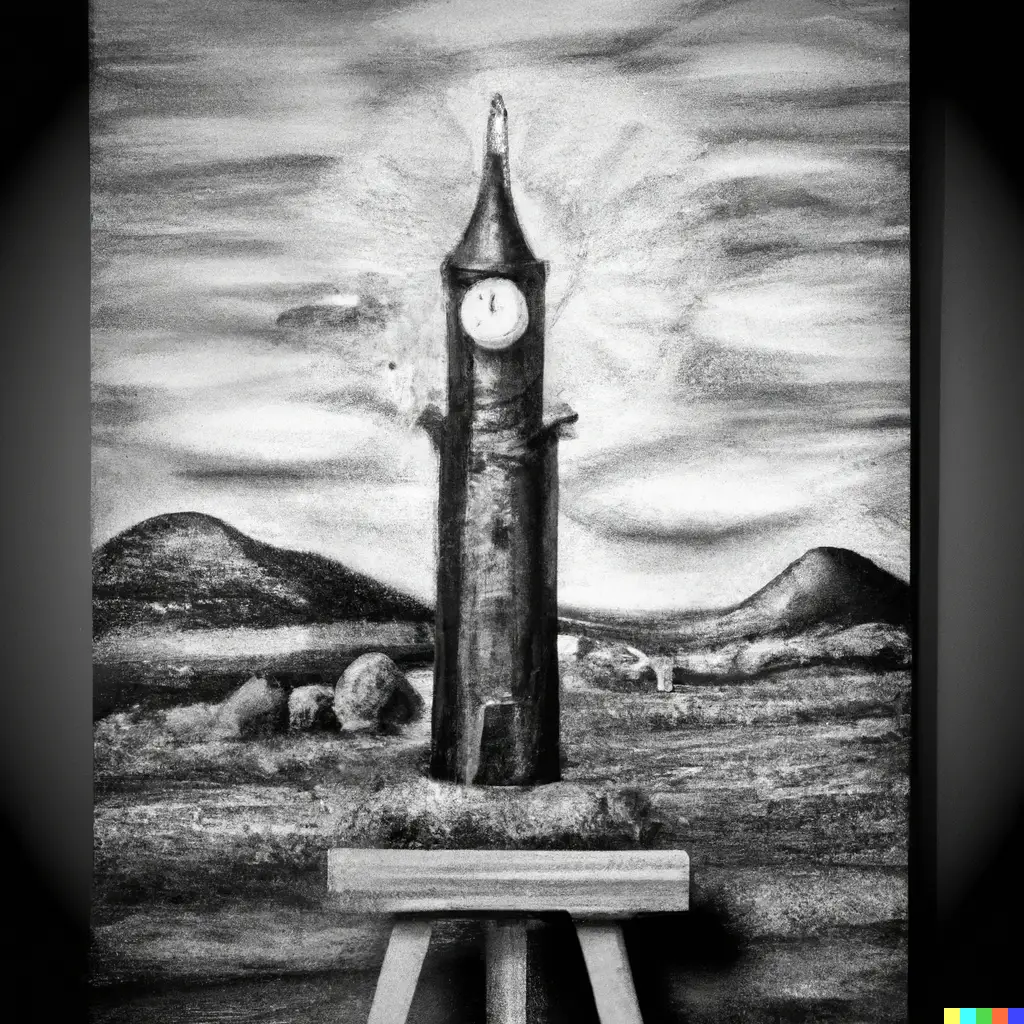
When you are doing digital paintings, painting over can be pretty useful. If painting over produces a lively artwork that you are satisfied with, it is okay to paint over images. The only thing you need to consider is whether you have got the right license for the image or you are infringing the copyright of the image owner. If the image owner is you, there is nothing in the way between you and painting over images.
Is photo Bashing cheating?
Photo bashing is not cheating. It is a technique used in digital art where the blending of several photos is used to create one final piece. Photo bashing speeds up your creative process. It will not affect the final piece’s quality if done right but it needs many skills as an artist.
Otherwise, photo-bashed art pieces may seem to lack something compared to the artwork of the normal creative process. It is always best to use your own photos when photo-bashing. If you use photographs of other artists it can be an infringement of their copyright unless you have the right license to photos.
Is using a ruler or shaper tools cheating?
Using rulers and even shaper tools is never considered cheating. You are never supposed to draw straight lines or perfect circles by yourselves. If rulers or shaper tools speed up your creative process you should use them. Because time is something very important in this competitive creative space.
However, it is also best to know how not to rely on these tools when drawing. You can practice drawing straight lines for 10 minutes, every day until you get better at it. What you have to do is do long quick strokes on paper, keeping your wrist stiff while pulling from the shoulders. The same applies to drawing circles free hand. The more you practice the better you’ll get at it.
I have written a whole article on ‘Is it okay to use a ruler in art? (Or is it cheating?)‘. You can find more details on where to use rulers in drawing as well as in paintings. You will also learn about other artists who use rulers in their artwork.
Is color picking in digital art cheating?
Color-picking from images of other artists’ artwork or captures is not cheating and can help you in the learning process. However, for a better learning experience take the images as references and try to match colors without picking colors. This way you will learn more about colors, lighting, etc. as you are actively involved in the art-making process.
You can use a color picker or the eyedropper tool to pick up colors from your own photos. However, if you limit yourself to this tool it will be harder for you to pick colors from real life without a digital reference. Therefore training your eye for colors without a tool would be the best even though it is not cheating.
Conclusion
There are many opinions in the art world about what is cheating and what is not cheating. Most often an artist found a way to get to the final artwork in a faster route it is thought to be cheating. However, in this competitive world, you will not have much time to complete a piece of artwork. Therefore it is best to follow those fast routes to get to the final art piece, without compromising its quality. Nothing in art is considered cheating unless you are copying the artwork of someone else.

